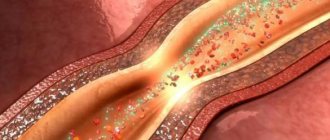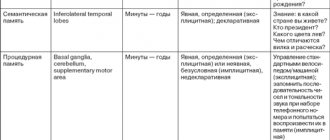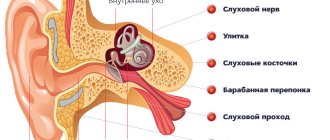What is dizziness?
True dizziness or vertigo is a condition during which patients have a feeling of rotation of surrounding objects around them or a false sensation of their own movement or rotation.
An example of true dizziness, but not in any way related to the disease, is the dizziness that appears in people after riding a carousel, when, after an abrupt stop, they continue to see the movement of surrounding objects relative to themselves, as if the carousel were still in motion.
In most cases, the occurrence of true dizziness is a symptom of diseases of the system of control of balance and body position in space. This system includes the eyes, the vestibular apparatus of the inner ear, and sensory receptors in the human muscles, joints, and bones. Very often, dizziness, which is caused by a disruption in the balance system, is accompanied by nausea and vomiting.
Obstetric conditions and gynecological diseases
| Main symptom | Additional symptoms |
| Weakness throughout the body |
|
Symptoms other than dizziness
As can be seen from the above, the term “dizziness” has a rather narrow medical interpretation (a false sensation of rotation of surrounding objects or one’s own rotation). But, despite this, people also use this term to refer to other symptoms that are not actually dizziness. So, most often “dizziness” is called such phenomena as:
- darkening in the eyes after abruptly rising to your feet from a sitting or lying position;
- a veil before the eyes;
- feeling of imminent loss of consciousness (fainting);
- weakness, nausea, feeling of confusion and unsteadiness in the legs;
- feeling of unsteady gait and impaired balance.
When a person suffering from dizziness comes to see a doctor, he should describe his condition, how he is feeling and the symptoms he is experiencing as accurately as possible, and not simply say that he suffers from “vertigo.” The further examination and treatment plan will depend on the accuracy of the description of the existing symptoms.
In contrast to true dizziness, which appears due to a disruption in the functioning of a person’s balance system, false dizziness, which patients describe as a feeling of weakness, instability, darkening in the eyes, blurred vision, etc., can most often be a sign of anemia, chronic fatigue , hypovitaminosis, hypotension and vegetative-vascular dystonia. In addition, fainting, episodes of lipothymia (a sharp decrease in muscle tone with great physical stress) and short-term attacks of epilepsy can also be confused with dizziness.
We pay special attention to attacks of sudden dizziness and weakness in people who have diabetes. In this category of patients, dizziness and weakness may indicate a dangerous decrease in blood glucose levels.
Causes of general weakness
There are many reasons for general weakness. According to generally accepted rules, they are divided into two types: in the form of known and unknown factors. For example, a child or adult with the flu almost always has a fever, as a result of which patients always complain of a strong feeling of weakness and “exhaustion.” It’s a different matter if weakness, as already noted, occurs without objectively visible reasons, which doctors identify during serious examinations. Thus, general weakness is very characteristic of anemia of various origins or hormonal diseases.
Of course, such a symptom manifests itself in a wide range of different pathologies, for example, vitamin deficiency. Vitamin deficiency is a condition when the human body lacks one or more vitamins. A special role in such conditions is played by a lack of vitamin B12, thanks to which red blood cells enter the human blood. A lack of red blood cells is always accompanied by oxygen starvation, a feeling of exhaustion and weakness.
If there is a lack of vitamin D in the body, which the body produces due to exposure to ultraviolet rays, fatigue and fatigue can become chronic, especially in the winter and autumn seasons.
With depression, which has long been considered a serious mental disorder, weakness in patients is very common, coupled with absent-mindedness and mental disturbances. Diseases of the thyroid gland (for example, hypothyroidism), accompanied by severe hormonal imbalances, also contribute to a constant feeling of weakness, especially in the arms and legs. It is no coincidence that patients describe this condition with the popular phrase: “Everything is falling out of my hands.” With hyperthyroidism, in addition to weakness, anxiety, tremors of the upper extremities, high body temperature and irregular heart rhythms appear.
Of the rare and complex diseases, accompanied by both general weakness and disorders of the intestinal tract, celiac disease should be especially noted, when the patient’s intestines are deprived of the ability to absorb gluten. If the diagnosis is not made and the consumption of flour products continues, the symptoms of fatigue and intestinal disorders will be constant.
There are a number of other reasons for weakness. It often occurs:
- with VSD;
- for diabetes mellitus;
- for acute and chronic infectious diseases;
- for any cold;
- for chronic fatigue syndrome;
- during menstruation in women;
- for severe injuries;
- in the postoperative period, etc.
How does the human balance system work?
In most cases, true (central, systemic) dizziness is a manifestation of various diseases of the system that provides balance and control of body position in space. This system consists of the following 3 components:
- The vestibular apparatus, which is located deep in the skull, where sensitive receptors are located that respond to the angular or linear acceleration of the body in space.
- Eyes that provide visual information about the location of the body and its parts in space, as well as in relation to other objects.
- Sensitive receptors (proprioceptors) that are found in human bones, joints, muscles and ligaments. They provide reliable information about the position of body parts in space, as well as relative to each other.
All these 3 components of the balance system simultaneously send information to the brain, where it can be analyzed and processed into a person’s idea of his position in space and relative to other objects.
If for any reason the data that comes from one of the sources is distorted (for example, irritation of the receptors of the vestibular apparatus by an inflammatory reaction when there is no movement and acceleration), then an incorrect idea is created in the brain about the position and movement of the human body in space . Then an illusory sensation of movement or rotation arises, when in reality the body is motionless.
The causes of a disorder in a person’s balance system can be very different. Nowadays, more than 80 diseases are known that can cause dizziness. Below we describe the most common causes of dizziness.
The influence of various factors on the development of asthenic syndrome.
Factors influencing the development of AS
- Emotional state (positive: optimism, positive attitude, no emotional disturbances, adequate attitude towards the disease; negative: the presence of apathy, depression, anxiety, fear, emotional lability, lack of positive emotions).
- Influence of the immediate environment (positive: support, partnerships in the family, focus on recovery; negative: Excessive anxiety, fears among relatives and friends, overprotection, or, on the contrary, indifference and lack of support).
- Availability of medical care (positive: high-quality medical care is available; negative: Low availability of quality medical care, increased patient anxiety, implementation of unnecessary or harmful recommendations, side effects from treatment).
- Physical activity of the patient during the course of the disease (positive: Maintaining adequate regular physical activity throughout the entire period of illness, the presence of medical rehabilitation measures in the hospital; negative: lack of physical activity).
Dizziness: the most common causes and forms
According to modern research, most often this disease is a symptom of diseases such as:
- BPPV (benign paroxysmal positional vertigo);
- basilar migraine;
- psychogenic dizziness;
- Meniere's disease;
- osteochondrosis of the cervical spine, as well as vertebrobasilar insufficiency;
- vestibular neuritis;
- brain tumors.
Note that BPPV accounts for more than 80% of cases of true dizziness. Below we will consider the main diseases that are accompanied by dizziness, and also describe the characteristics of dizziness in each case.
1. Benign paroxysmal positional vertigo is one of the most common forms of true vertigo. The name itself is deciphered as follows: “benign” means a favorable, harmless course of the disease, “paroxysmal” means the sudden onset of dizziness; “positional” - the appearance of dizziness when turning the head in a certain direction.
The reason for the development of BPPV is irritation of the receptors of the vestibular apparatus by otolith stones, which are located in the semicircular canals of the inner ear. This disease can also occur spontaneously in a person of any age, but in most cases it appears in people over 50-60 years old, after an injury or infection.
The main symptoms of benign positional vertigo are:
- the occurrence of severe dizziness when tilting or turning the head, when turning in bed, when throwing the head back;
- severe dizziness lasts from several seconds to several minutes, and it may be accompanied by weakness, severe nausea or vomiting;
- attacks of dizziness can appear in series, after which they disappear without a trace for some time.
Treatment of BPPV is carried out with a special exercise, and always under the supervision of a neurologist. Its duration is only 1-2 minutes, and its effectiveness reaches 90%.
2. Dizziness with migraine. Migraine is one of the most common types of headaches. In some cases, during a migraine attack, blood circulation is disrupted in the areas of the brain that control the functioning of the vestibular apparatus, which causes severe dizziness, after which a severe headache in the back of the head may immediately develop, imbalance may occur, vomiting, noise and light intolerance may occur. . Some people with migraines may only have severe dizziness and nausea, but no headache. In children, one of the precursors of migraines in adulthood are attacks of severe dizziness, imbalance, nausea, vomiting, which over time turn into typical migraine attacks.
3. Psychogenic dizziness ranks second in prevalence after BPPV. But unlike it, psychogenic dizziness is not true dizziness, since it is not associated with disturbances in the functioning of the vestibular apparatus.
The main characteristics of this disease:
- description of dizziness as a feeling of fog in the head, confusion, fear of falling and losing consciousness, but not as one’s own spinning or other objects;
- attacks of dizziness occur spontaneously, often under stress, in a confined space (transport, elevator), as well as in crowded places;
- in addition to dizziness, patients have other complaints that resemble some diseases of the internal organs: a lump in the throat, soreness, pain in the chest, abdomen or in the heart area, pain and tension in the muscles, a feeling of lack of air, a feeling of tension and internal fear, anxiety, irritability, anxious sleep, strong and unreasonable concern about one’s own health, as well as the health of loved ones, etc.
Psychogenic dizziness can also be considered one of the most common manifestations of VSD (vegetative-vascular dystonia). Particularly often, attacks of false dizziness can be observed in patients with anxiety disorders and panic attacks.
Determining the psychogenic nature of dizziness plays a big role in determining the correct treatment, so if you have an idea that dizziness in your case may be psychogenic, we recommend that you study information about vegetative-vascular dystonia, as well as its treatment.
In particular, with psychogenic dizziness, treatment that is intended for VSD (sedatives, psychotherapy) will be much more effective than specific drugs for dizziness, prescribed for all cases of true dizziness.
4. Dizziness with Meniere's disease. This disease is characterized by periodic attacks of severe dizziness and deafness (usually in one ear), gradually leading to hearing loss.
At the moment, the exact cause of Meniere's disease is still unknown. But there are suggestions that in some cases it may be caused by injury, viral infections or allergies.
A typical manifestation of Meniere's disease is an acute attack of severe dizziness, which lasts several hours or days and is accompanied by nausea, vomiting, tinnitus, hearing loss (in one ear) and a feeling of pressure inside the ear.
Typically, attacks of this disease appear one after another over several weeks, after which they disappear for some time, but then begin again.
5. Dizziness due to osteochondrosis, as well as vertebrobasilar insufficiency, neck and head injuries. As we have already said, the work of the human balance control system involves sensitive receptors of the muscles, bones, joints, ligaments of the whole body and mainly the muscles, bones and ligaments of the neck.
Degenerative diseases of the cervical spine, including osteochondrosis, are one of the most common causes of dizziness, which patients often describe as unsteady gait and rarely as a feeling of spinning.
Osteochondrosis of the spine disrupts the functioning of the sensory receptors in the neck, and can also cause disruption of blood circulation in the vertebral arteries, which supply blood to the parts of the brain responsible for balance and maintaining the body, located in the brain stem.
Chronic circulatory disorder in the lower parts of the brain (vertebrobasilar system) is called vertebrobasilar insufficiency. Atherosclerosis of the neck vessels and long-term hypertension (increased blood pressure) also play a certain role in its development. Most often, vertebrobasilar insufficiency occurs in older people. In addition to dizziness, it is accompanied by symptoms such as memory loss, headaches (mainly in the back of the head) and tinnitus.
Attacks of acute circulatory disorders in the vertebrobasilar region can manifest as severe dizziness, loss of consciousness, vomiting, weakness and double vision.
Injuries to the head and cervical spine (especially after car accidents) can also cause dizziness. In such cases, it is usually more pronounced in the first days after the injury and gradually decreases as the patient rehabilitates.
6. Dizziness with vestibular neuritis. This disease is an inflammation of the vestibular nerve, which carries impulses from the receptors of the inner ear to the brain. When the vestibular nerve becomes inflamed, it temporarily loses its ability to conduct impulses. This, in turn, is manifested by severe dizziness, unsteady gait, nausea and vomiting.
The main cause of vestibular neuritis is viral infections, so attacks of associated dizziness may be accompanied by weakness, fever, cough or runny nose.
7. Dizziness due to brain tumors. Some brain tumors that are located near the inner ear can cause severe and progressive dizziness.
Symptoms of a tumor, in addition to dizziness, may include the following phenomena:
- hearing loss (usually one ear);
- nausea;
- tinnitus, hearing loss;
- headache;
- the appearance of strabismus, paralysis of the facial muscles.
Dizziness as a symptom of a brain tumor is most often observed in young people and children.
Treatment
The choice of treatment for dizziness depends on the cause that caused it.
- In case of disturbances in the blood supply to the brain, vasodilators and antihistamines are mandatory, as well as drugs to improve blood flow (betahistine, cinnarizine).
- When nerve conduction slows down (for example, due to a lack of oxygen), nootropic drugs (picamilon, etc.) are required.
- If osteochondrosis of the cervical spine is detected, drugs that relieve muscle spasms (mydocalm) are added to the treatment regimen.
- If the cause is hormonal imbalance, hormone replacement therapy is prescribed, if possible. This method is especially effective during menopause.
- For psychogenic causes of dizziness, vegetative-vascular dystonia, panic attacks, sedatives are required.
- For motion sickness in transport, appropriate medications are used, which are taken before the trip. This helps get rid of dizziness on the road.
Drugs can be combined depending on the specific clinical situation. If dizziness occurs due to damage to the ear, treatment is carried out by an ENT specialist.
Medicines can be supplemented with:
- physiotherapy (magnetic therapy, laser exposure, electrophoresis, etc.);
- massage: especially effective for osteochondrosis of the cervical spine;
- physical therapy to unload the spinal column and relieve muscle spasms;
- acupuncture;
- manual therapy.
In some cases, the intervention of a psychiatrist is required, for example, with panic attacks. In this case, the correct selection of medications will help reduce the number of attacks or completely get rid of them.
If attacks are associated with insufficient functioning of the vestibular apparatus, it can be strengthened with the help of simple exercises:
- rotation of the head and torso with eyes closed or open;
- stand on one leg, the longer the better;
- turning the eyes in different directions;
- swinging on a swing or carousel with a gradual increase in speed.
Swimming has a good effect.
Dizziness during pregnancy
False dizziness (a feeling of weakness, instability, near fainting) is very often observed during pregnancy. Attacks of dizziness in such cases are usually associated with hypotension, as well as a decrease in blood glucose concentration. We bring to your attention the following recipe, which is an effective method of treating dizziness during pregnancy:
In a mug of warm, boiled water, you need to dissolve 1-2 tbsp. l. sugar and drink immediately after waking up or before leaving the house.
Pregnant women (especially during the first half of pregnancy) should always carry water with them, and at the first sign of dizziness, try to drink as much as possible.
Features of weakness in diabetes mellitus
One of the main causes of weakness that occurs with diabetes is a possible overdose of insulin. Also, diabetics often develop pathologies of the stomach or intestines, and the kidneys, heart and blood vessels suffer. Since the pancreas in such patients always works incorrectly and cannot produce insulin in the quantities required by the body, the supply of glucose into the cells is limited. The result is a lack of vital energy, and if its level in the blood suddenly “jumps,” the blood begins to thicken. Organs cannot receive valuable nutrients due to deteriorating blood supply, and a feeling of weakness can haunt a diabetic regularly.
Cases when you should consult a doctor immediately
You should consult a doctor as soon as possible in cases where dizziness is accompanied by the following symptoms:
- increased body temperature;
- persistent vomiting;
- severe headache, weakness of arm or leg muscles;
- severe dizziness lasts more than an hour;
- during an attack of dizziness the person lost consciousness;
- when dizzy, the patient fell and was seriously injured;
- A patient with diabetes mellitus and hypertension developed severe dizziness.
Nervous system diseases
| Main symptom | Additional symptoms |
| Weakness throughout the body |
|
Diagnosis of dizziness
Diagnosis and treatment of dizziness is carried out by neurologists, vertebrologists, otorhinolaryngologists and ophthalmologists. In order to clarify the cause of dizziness, as well as prescribe the correct treatment, a patient with dizziness must undergo a series of examinations:
- Doppler ultrasound of the main arteries of the head;
- examination by an ophthalmologist;
- audiographic examination;
- CT (computed tomography) or MRI (magnetic resonance imaging);
- X-ray of the skull and cervical spine.
Weakness due to diseases of the spine
Degenerative-destructive diseases of the spinal column, known under the general concept of “osteochondrosis,” can also contribute to the appearance in patients of a feeling of weakness of varying intensity. Due to the destruction of cartilage and connective tissue formations inside the spine, “clamps” of nerve endings occur, accompanied by regular pain. As for weakness, in such cases it is often localized in the legs, which, according to patients, sometimes simply stop “holding” them. Sometimes weakness covers the entire body: most often this is a sign that destructive processes are localized in several segments of the spine at once.
In case of constant weakness, the first consultation with the patient is usually given by a general practitioner, who prescribes a series of examinations (ultrasound, blood tests, FLG). If necessary, the therapist gives a referral to a doctor of a more narrow specialization. This could be an oncologist, neurologist, endocrinologist, etc. In any case, it is necessary to establish the cause of such symptoms as soon as possible in order to take effective therapeutic measures in a timely manner.
Do you like the material?
Don't forget to subscribe to our Yandex.Zen!
Comments to the article 0









